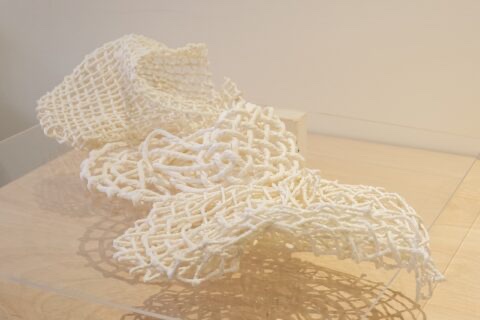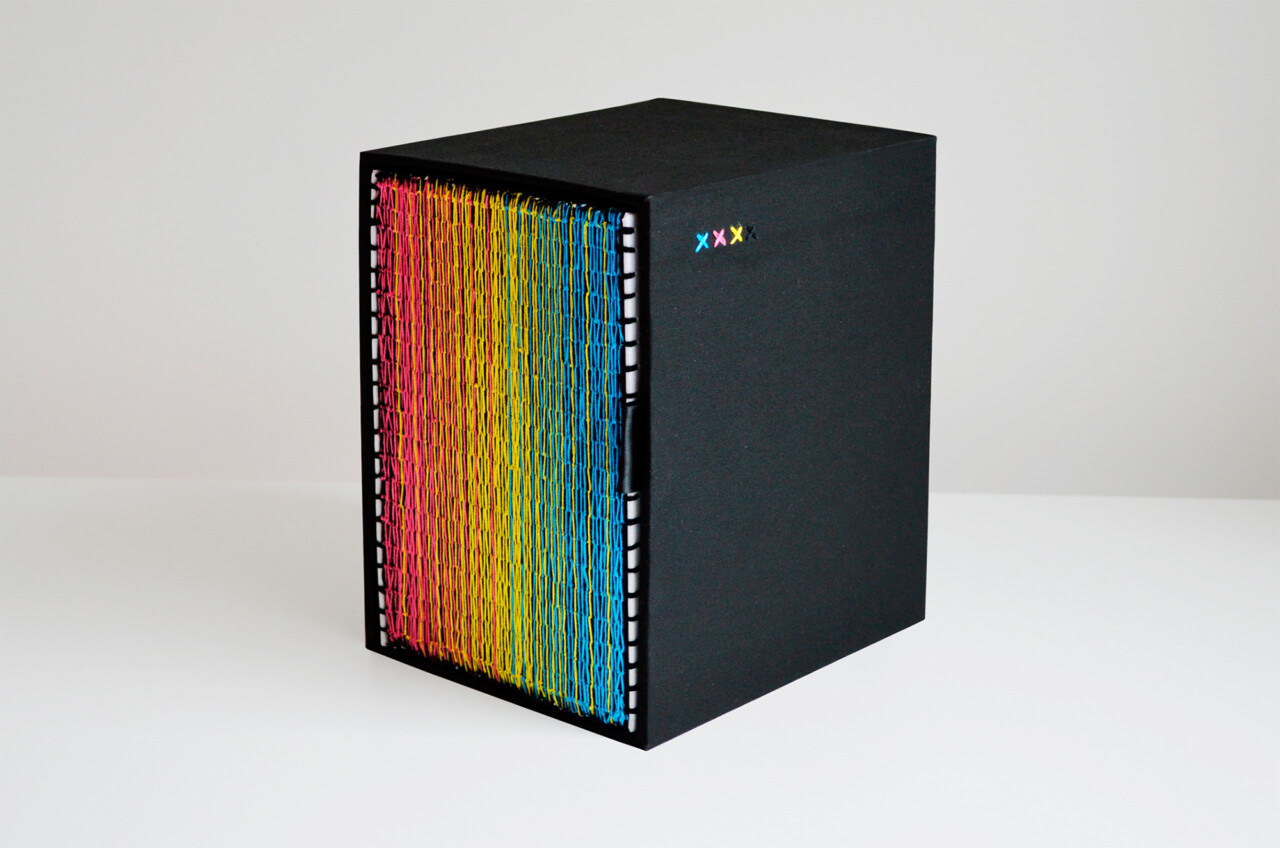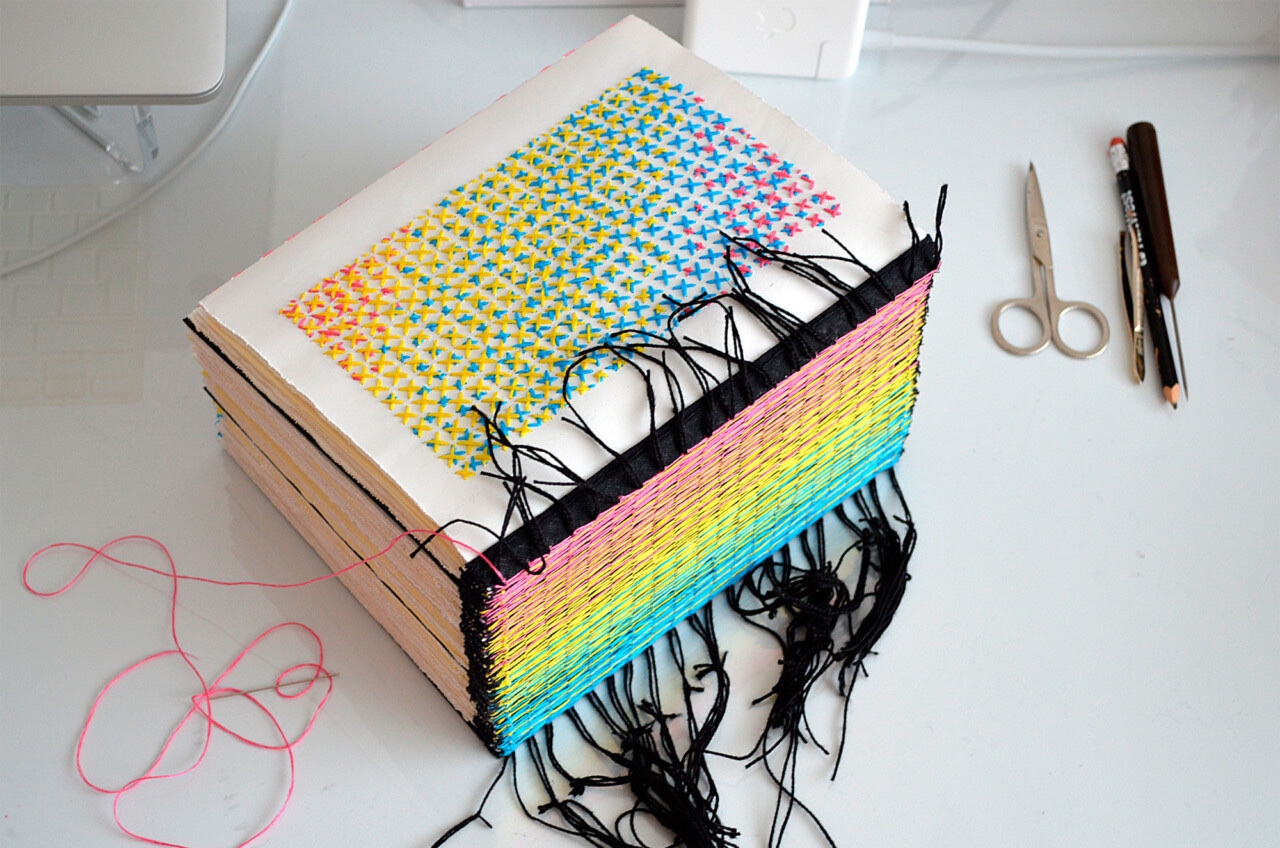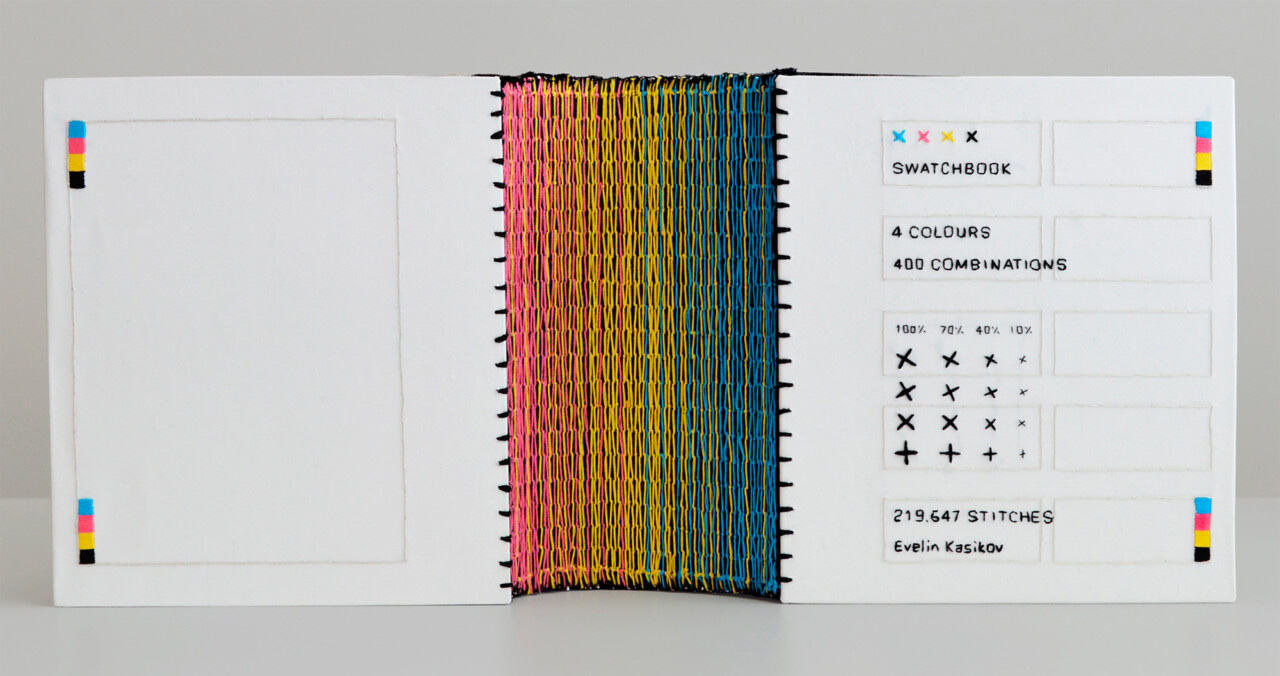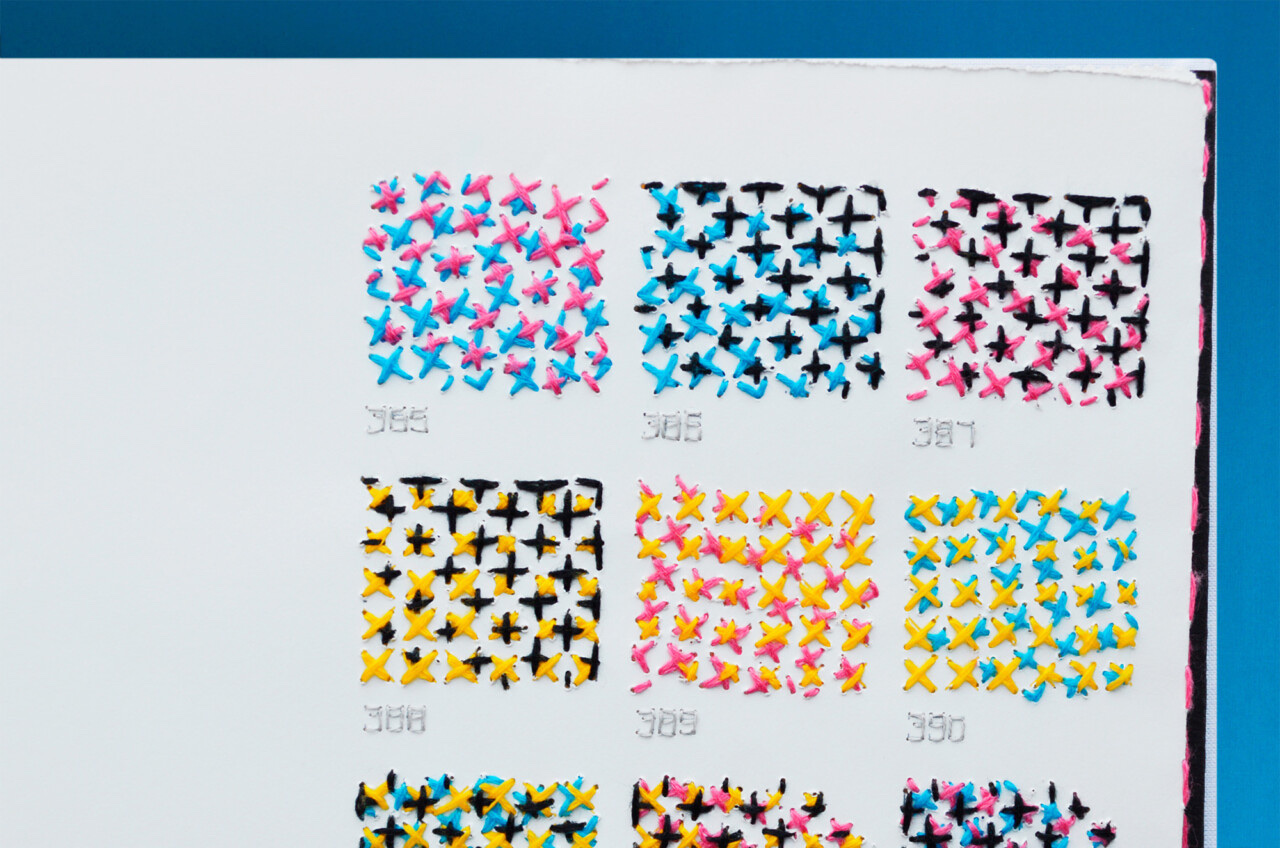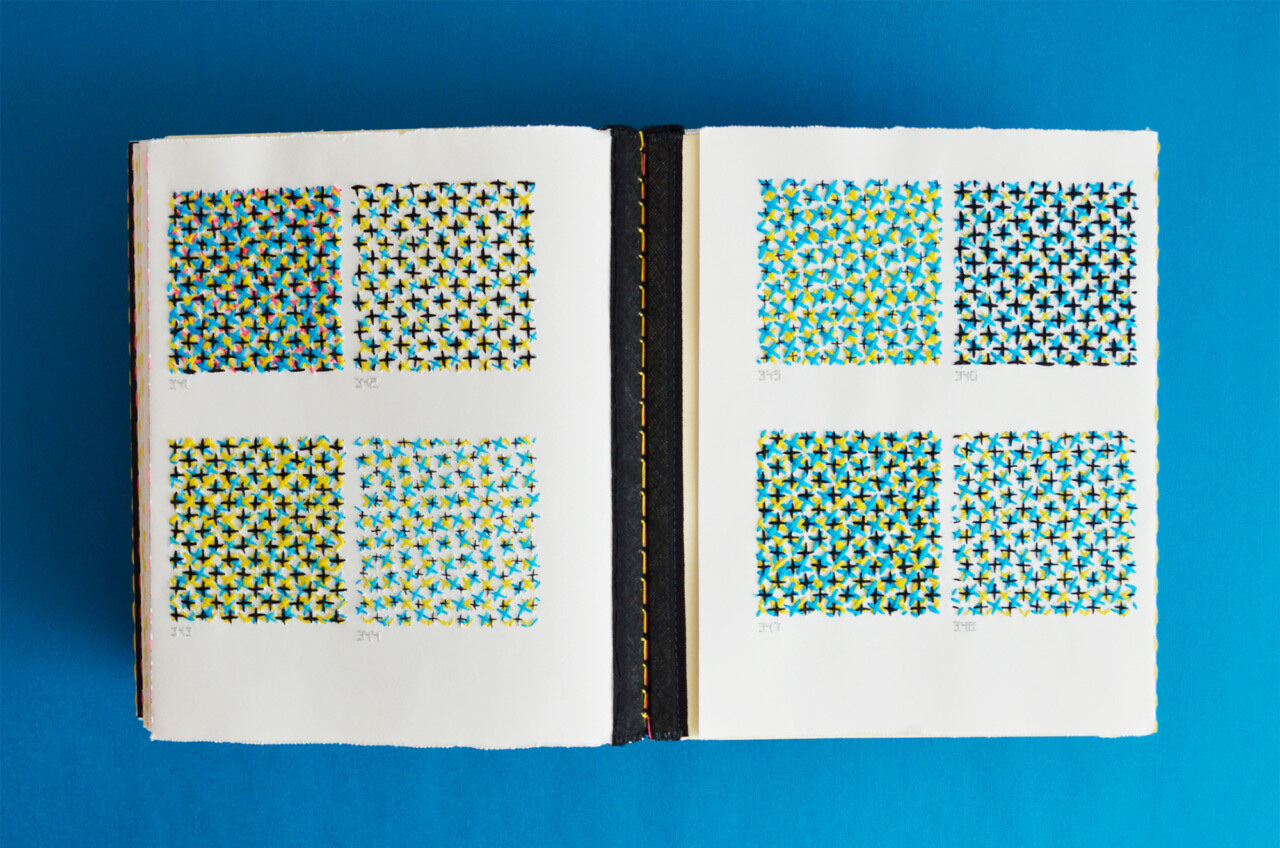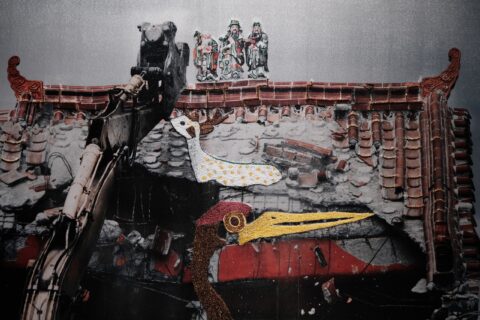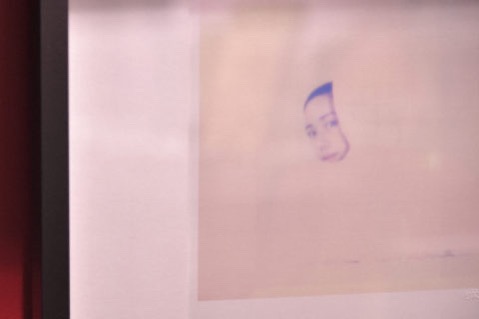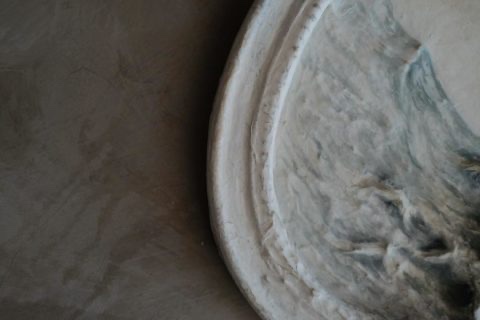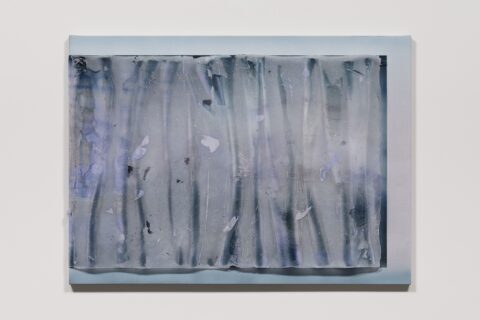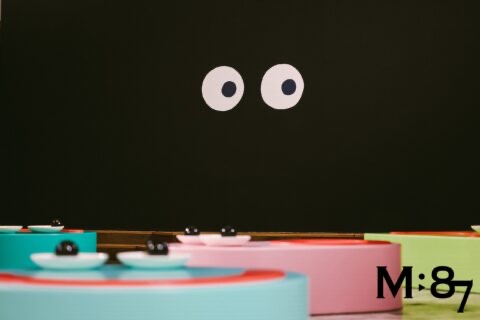除非你是從事設計或相關行業,否則聽見「CMYK」這個印刷術語,通常只能露出疑惑,或者是似懂非懂的表情。作為每個設計人員,幾乎每天都會接觸的套色模式,「CMYK」指的就是黃色,青色和洋紅色這三原色,再加入黑色油墨,憑藉這一套四分色模式,通過疊印就能混合出近乎所有的色彩,是彩色印刷方面的基本知識。然而如果聽完這解釋,還是覺得太抽象的話,不妨來看看這本《XXXX Swatchbook》,用實體的刺繡方式,直觀地讓你認識到「CMYK」,如何利用疊印變化出無限的色彩。
Unless you work in design or related disciplines, you might look perplexed or unsure upon hearing the term “CMYK”. A designer can hardly go about a day of work without having some kind of contact with this colour model. CMYK refers to the three primary colours, namely cyan, magenta and yellow, along with the black (key) colour. This four-colour model is a basic concept in colour printing concerning how these colours can be superimposed to create almost every shade of colour. If you still consider this explanation too abstract, you may want to flip through this book titled XXXX Swatchbook, which uses embroidery to visually demonstrate how CMYK can be transformed into infinite colours through superimposition.
來自愛莎尼亞,後來搬到英國倫敦發展的藝術家Evelin Kasikov,擅長活版印刷、傳媒設計和書籍設計。但除此之外,她也醉心於探索數位和類比的差異,曾在中央聖馬丁學院修讀期間,以刺鏽方式製作書籍《CMYK embroidery》,通過用棉線穿縫疊影的方式,不用半滴墨水,即帶來了四色印刷的效果。而在Kasikov的作品中,都有用上她的刺繡工藝,像是最近出版的《XXXX Swatchbook》,就是《CMYK embroidery》的一個延伸,其再次以四色棉線,帶來達四百款的色版,整本書之中總共縫了兩萬多針,製作過程可謂一點都不輕鬆。有趣的是,平日翻雜誌時,不大會多加注意的印刷色彩,因為被Kasikov以線代墨作呈現,這些摸得上手的「3D色彩」,讓普通至極的色彩變得更悅目,更讓人愛惜了。
Originally from Eesti Vabariik and currently based in London, Evenlin Kasikov is an artist who excels at book printing and design as well as media design. Moreover, she is also infatuated with how digital and analog are different from one another. When she was studying at Central Saint Martins College of Art and Design, she employed embroidery to create a book titled CMYK embroidery, in which she modelled the effects of the four-colour printing process by crisscrossing and overlapping cotton threads, without using a single drop of ink. Her creations always feature her needle work, including her recently published XXXX Swatchbook, which can be regarded as an extension of CMYK embroidery. Once again cotton threads in four colours are used to form as many as four hundred different colour plates. The book is made with a total of 20,000 stitches, which is no mean feat. Intriguingly, when we read a magazine, we normally do not pay any particular attention to the colours in print. However, thanks to Kasikov’s demonstration through the use of threads instead of ink, these touchable 3D colours have turned utterly mundane colours into something more precious and pleasing to the eye.
